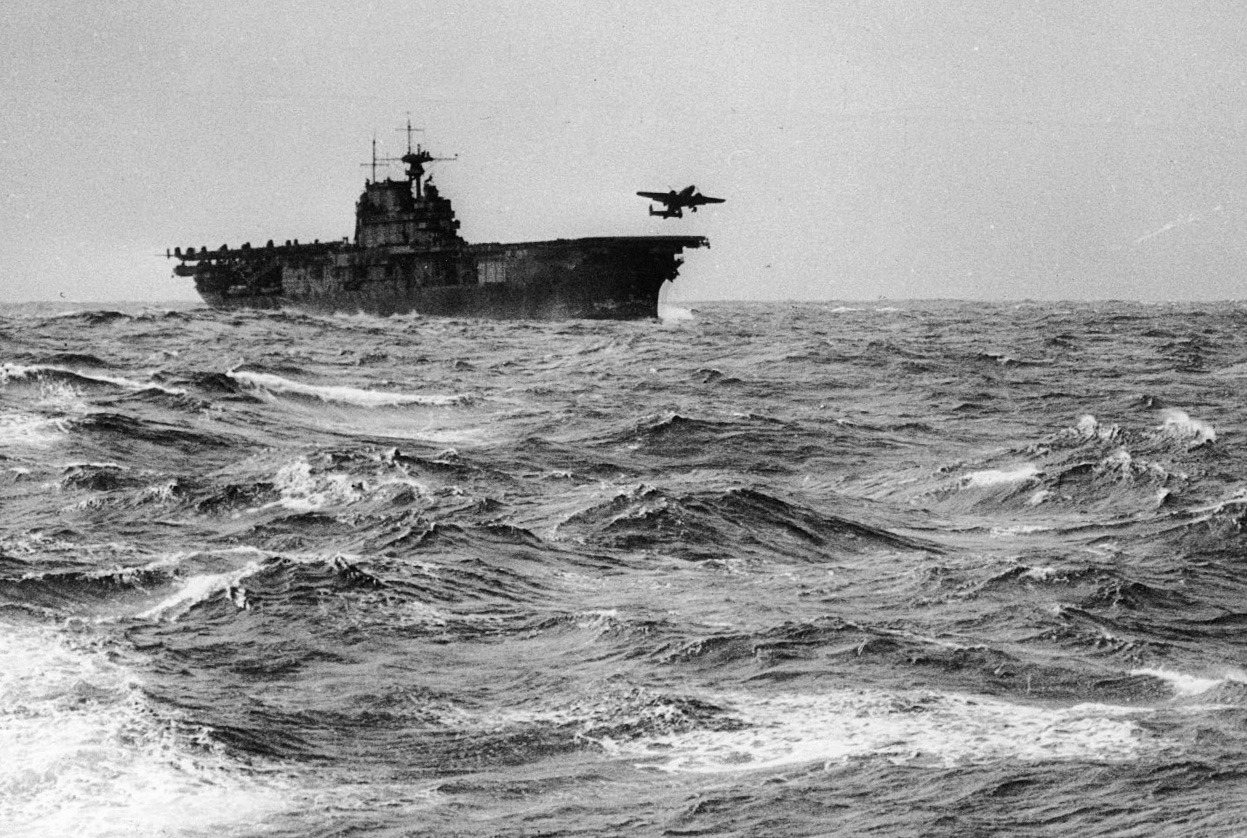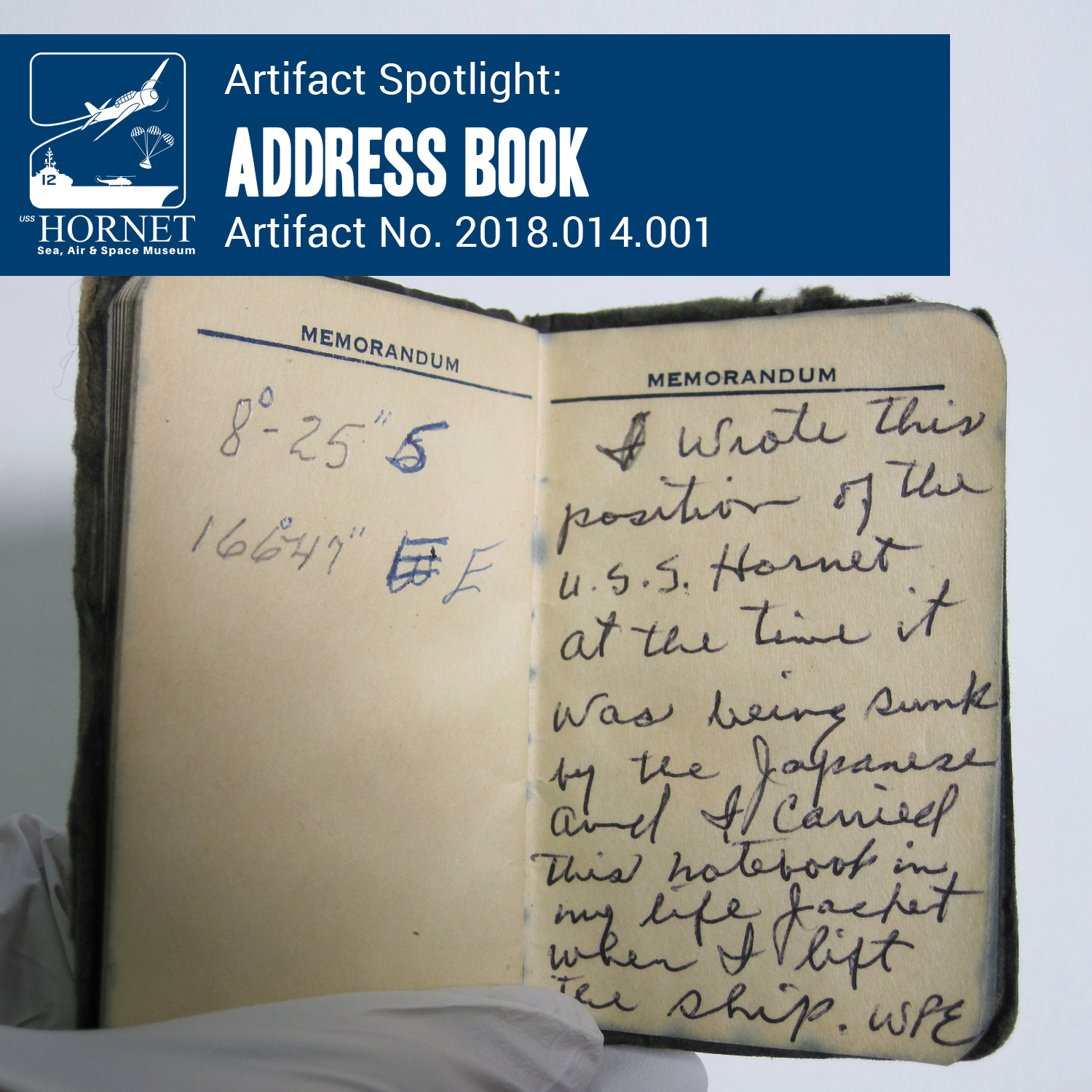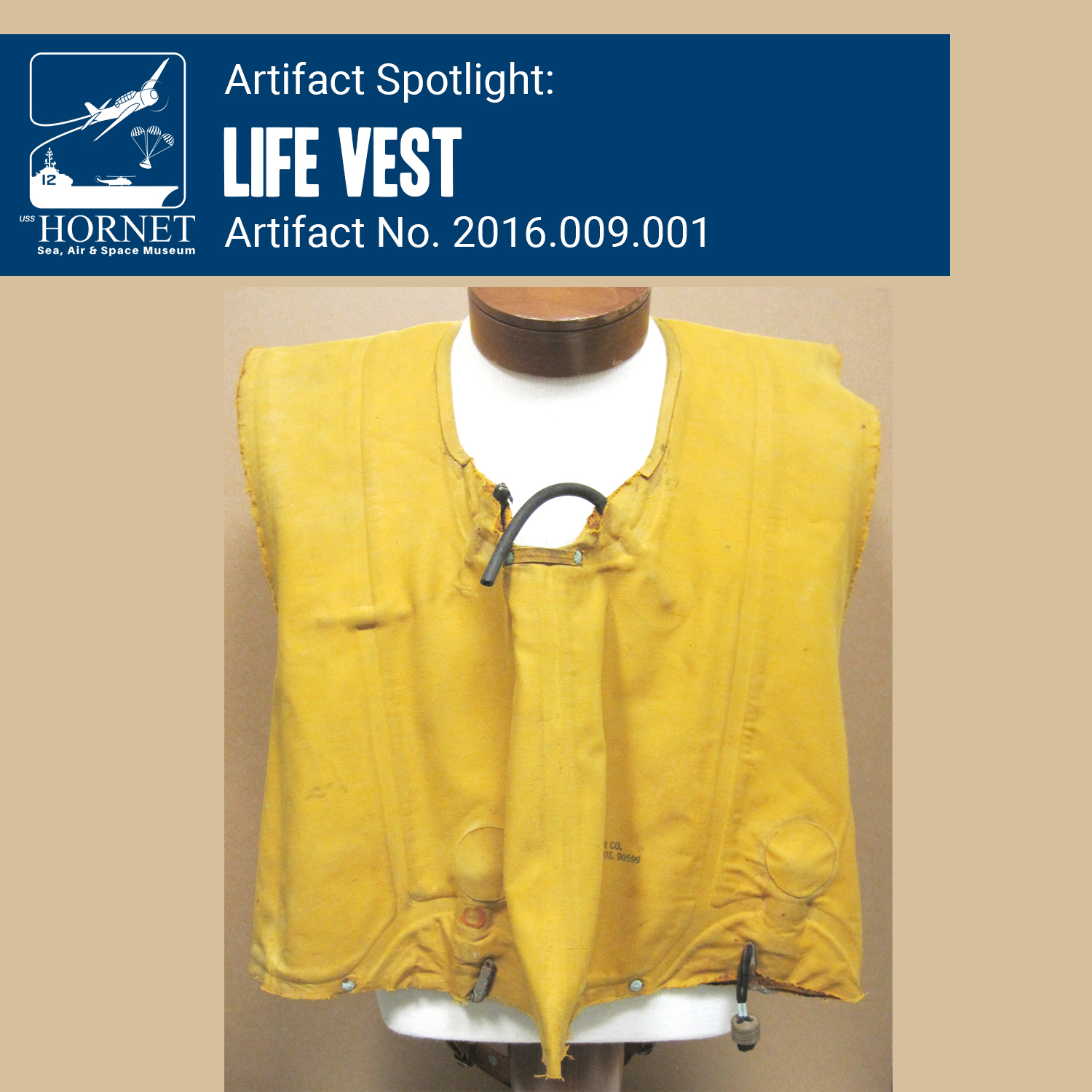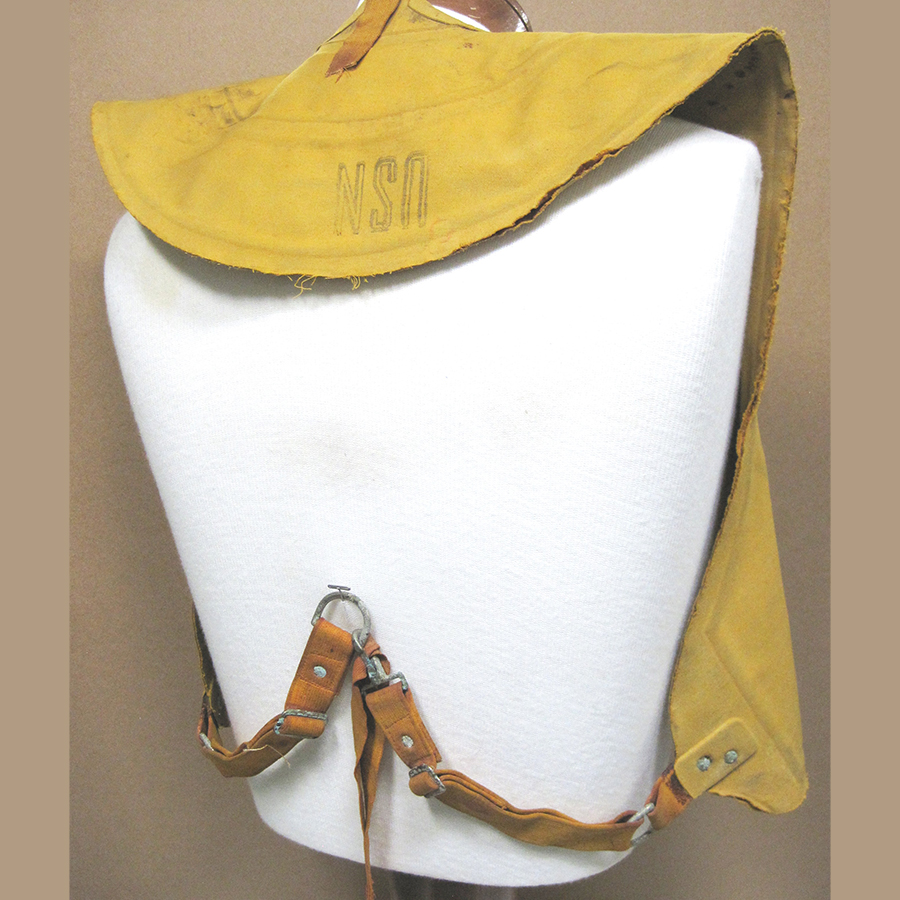
The seventh U.S. Navy ship named Hornet was an early aircraft carrier commissioned in October 1941. USS Hornet (CV-8) was the third and final member of the Yorktown-class, commissioned just weeks before the attack on Pearl Harbor. As a pre-World War II vessel, her size was limited in accordance with international naval treaties from the 1930s.
Her first mission was the transport of the famous Doolittle Raid in April 1942., the first U.S. air raid to strike the Japanese home islands after the attack on Pearl Harbor. The raid demonstrated the vulnerability of the Japanese home islands to air attack and the Raid significantly boosted American morale.
CV-8 would continue to fight in the Pacific Theater, participating in the historic Battle of Midway and others before she was ultimately dealt a mortal blow at the Battle of the Santa Cruz Islands in October 1942.
CV-8 Timeline
1939
September
Identified initially as Hull #385, USS Hornet (CV-8) was built at the Newport News shipyard in Norfolk, Virginia, beginning in September of 1939.
1940
December
Hornet was launched by Mrs. Frank Knox, wife of the Secretary of the Navy.
1941
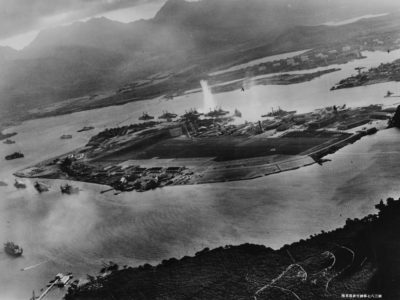
October 20
Hornet was commissioned. Her commanding officer was Captain Marc “Pete” Mitscher, who would become a recognized master of carrier warfare during WWII.
December 7
Imperial Japanese Navy (IJN) attacked Pearl Harbor.
Immediately after the Pearl Harbor attack, President Roosevelt tasked senior U.S. military commanders with finding a suitable response to assuage the public outrage and a daring plan began to take shape.
1942
February 2
An initial proof-of-concept test was conducted off Norfolk, VA. Two lightly loaded B-25s were flown off the brand new Hornet following completion of her sea trials. Following this success, 24 bombers were requisitioned and modified.
March 4
Hornet departed Norfolk, heading for the Panama Canal and then on to Pearl Harbor to help staunch the Japanese threat.
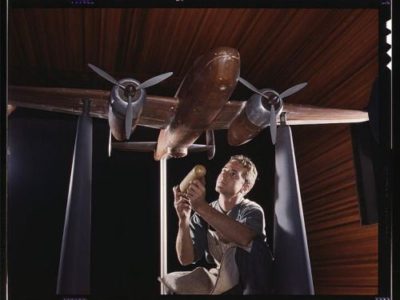
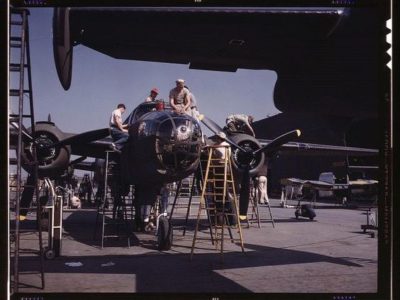
March 28
Captain Mitscher received a new set of Top Secret orders that would take the brand new ship on a very circuitous route to Pearl Harbor.
March 31
Hornet moored at pier 2, Alameda Naval Air Station while twenty-two USAAF B-25 Mitchell bombers flew into NAS Alameda. Sixteen would ultimately embark on Hornet.
April 1
134 Army pilots and aircrew, led by LtCol Jimmy Doolittle, boarded the ship and Hornet slipped out to a mooring in the San Francisco Bay for the night to wait for the heavy fog to dissipate.
April 2
Hornet and her escorts (Task Force 16.2) steamed under the Golden Gate Bridge, beginning the legendary mission known as the Doolittle Raid.
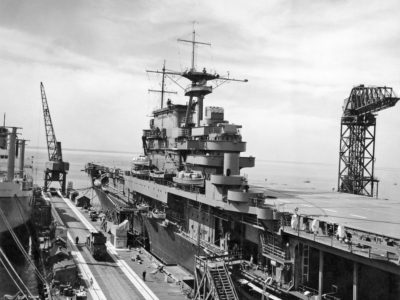
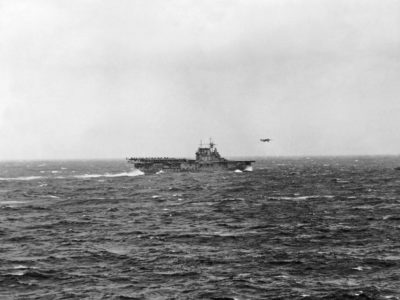
April 13
Hornet rendezvoused with Task Force 16.1 under the command of Vice Admiral William Halsey aboard the USS Enterprise (CV-6).
April 18
Early in the morning, the U.S. force was sighted by a Japanese picket boat that immediately radioed a warning to its headquarters. To ensure the safety of the task force, it was decided to launch the strike immediately—250 miles farther from Japan than planned. The weather conditions were miserable with rain, 20-knot gusting winds, and huge waves crashing over the bow. While none of the B-25 pilots, including Doolittle, had ever taken off from an aircraft carrier before, all 16 planes were launched safely in one hour, bound for the Japanese homeland.
Doolittle Raid
The Doolittle Raid of April 18, 1942 was the first U.S. air raid to strike the Japanese home islands during WWII. The mission is notable in that it was the only operation in which U.S. Army Air Forces bombers were launched from an aircraft carrier into combat. The raid demonstrated how vulnerable the Japanese home islands were to air attack just 4 months after their surprise attack on Pearl Harbor. While the damage inflicted was slight, the raid significantly boosted American morale while setting in motion a chain of Japanese military events that were disastrous for their long-term war effort.
For more information, CLICK HERE.
April 30
Hornet was quickly refitted for major combat operations and departed for the Coral Sea.
May 7-9
Battle of Coral Sea, for which the Hornet arrived too late to participate.
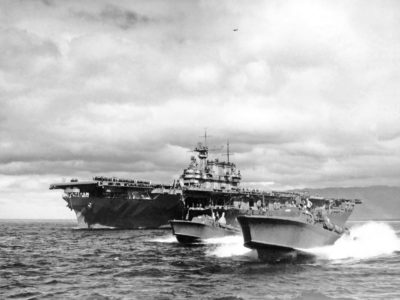
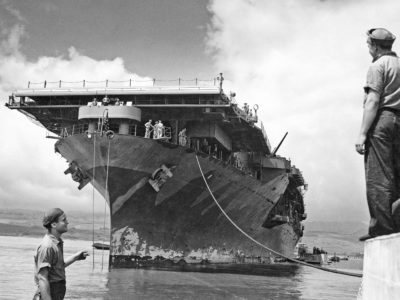
May
Hornet was positioned 325 miles northeast of Midway Atoll and waited for the invasion fleet to arrive.
June 4
Battle of Midway – four Japanese fleet carriers launched an air raid against Midway’s defenses. During this time, American reconnaissance aircraft located the Japanese fleet.
Battle of Midway
Japanese political leadership and senior military commanders were stung by the Doolittle Raid of April, 1942 when sixteen U.S. aircraft bombed Tokyo and other major cities. The raid, while militarily insignificant, showed the existence of a gap in the defenses around the Japanese home islands. Sinking America’s aircraft carriers and seizing Midway Island, the only strategic island besides Hawaii in the eastern Pacific, was seen as the best means of eliminating this threat. Fleet Admiral Yamamoto was tasked with creating a plan to invade and hold the island. His invasion plan was complex and included a second operation against the Aleutian Islands near Alaska, dividing his naval forces. Due to battle damage following the Battle of Coral Sea, his Carrier Strike Force consisted of only four fleet aircraft carriers guarded by just a handful of cruisers and destroyers. Achieving complete surprise over the Americans was his key prerequisite for success. Unfortunately for Yamamoto, the U.S. Navy had broken a key Japanese naval code (JN-25) and was aware of his invasion plans.
For more information, CLICK HERE.
August 7
The First Marine Division assaulted both Tulagi and Guadalcanal. Neither American nor Japanese strategists predicted the bitter six month contest of attrition that would take place on and around these remote jungle islands.
August 24th
Enterprise was put out of action by bomb damage from an enemy air attack. One week later, USS Saratoga (CV-3) was heavily damaged by an enemy submarine.
September 15
USS Wasp (CV-7), sailing only a few miles away from Hornet, was hit and sunk by three torpedoes from a submarine.
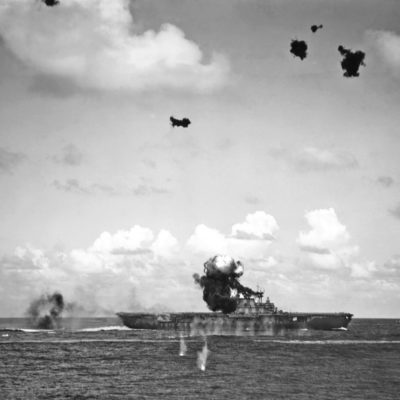
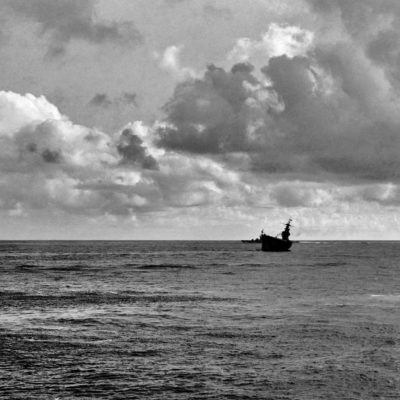
October 22
The Japanese decided to launch a major offensive on Guadalcanal while at the same time “sweeping” the American fleet from the Solomon Islands.
October 26
When Hornet and Enterprise were just north of the Santa Cruz Islands, search aircraft from the opposing forces found each other’s main fleet. Within ten minutes, Hornet was hit by four bombs and two torpedoes, and sustained significant damage from two Val dive bombers that crashed into her. Hornet lost her propulsion capability and was dead in the water. After most of the crew was transferred from the ship, a damage control party put out the fires and repaired some of the damage. Later that afternoon, she was attacked again and hit by another torpedo and two bombs. At this time, she was abandoned and sank early the next morning – one year and seven days after being commissioned. Approximately 140 of her sailors and air crews were killed that day.
Battle of Santa Cruz Islands
During September and October, both the Japanese and the American forces on and around Guadalcanal had escalated the fighting in an almost piecemeal fashion, with reinforcements pouring in on both sides. The stakes became improbably high for this remote island and it became a national test of willpower. US military planners were determined to keep the supply lines open with Australia while the Japanese were just as determined to cut them.
There had been many smaller naval clashes in the Solomon Islands area but in late October, the Japanese decided to launch a major offensive. Their tactical goals were to gain control of Henderson airfield on Guadalcanal, eliminate the 10,000 American troops on the island and destroy all allied warships in the Solomons area. On October 11, a massive naval force left Truk to provide cover for the invasion forces with four aircraft carriers, four battleships, ten cruisers, and 30 destroyers.
Unfortunately for them, VADM “Bull” Halsey had just been given command of the US South Pacific Force. On October 24, Enterprise (CV-6) and South Dakota (BB- 57) arrived from Pearl Harbor along with their escorts, in effect doubling the firepower of the US Navy in the area. The US now had two aircraft carriers, one battleship, six cruisers, and fourteen destroyers in their strike team – the odds were only 2 to 1 against them, which was not bad by 1942 standards. Halsey immediately ordered this force to move north of the Santa Cruz Islands to intercept the IJN fleet and keep them from supporting the invasion force.
For more information, CLICK HERE.


